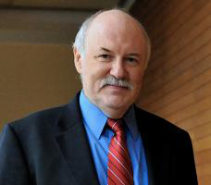Star. Saint Austin Review, September/October, vol. 6, No. 5, 2006, pp. 27-30. Piotr Jaroszyński. transl. Hugh McDonald
Western civilization today has the mass media as its spiritual, and money as its material, keystones.
The entire field of individual human creativity has lost its human face, becoming instead a mechanical exploitation of the possibilities of the human brain.
When we deny the distinct existence of minds in individual human beings, the result is the domination of one ideology that allows no dissent.
